Permaculture Radio Show: Obtain a Yield
We have been moving ahead with the coverage of the 12 Permaculture Principles with our show through Global Homestead Collective (@ghscollective) every Tuesday from 4-5pm CST. Check it out here on the Global Homesteading Collective, but if you can't make it, do not fear for we will record the posts each week.
Last week's show focused on the principle of Catch and Store Energy. This principe reminds us to understand where the energy is an any system and plan to capturing it for efficient use over time. If we can plan to times of plenty, we can effectively make use of this energy. It may be in the form of sunlight, water, fertility heat or many other forms.
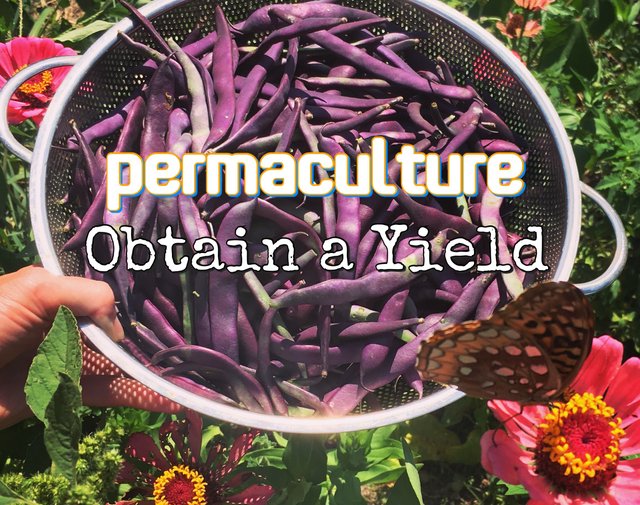
Today's yield: Purple Podded Pole Beans!
Permaculture offers a design system that takes a holistic approach to meeting our needs! Today's episode is focused on principle #3:
Obtain a Yield: You can't work on an empty stomach
An image of a beet with a bite taken out of it.
Listen to it this week's episode here:
Today's show focused on what we are getting from our actions and systems. Just as a business can't always operate "in the red", we as designers need to be getting rewards from our actions. This can often be achieved if we get creative and think of yield opportunities everywhere.
The subtitle of "you can't work on an empty stomach" is a great reminder that we need fuel to keep going. As designers this means we must receive something from our efforts be it food, money, useful items or services.
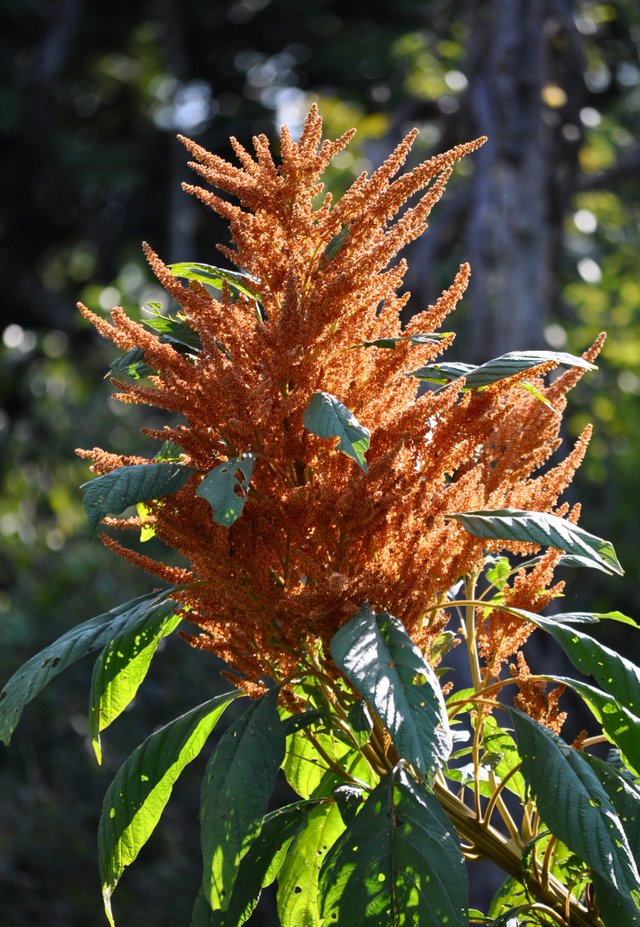
Golden Amaranth, a vigorous re-seeding annual. Seeds (eaten like quinoa or cooked in breads) & greens are edible.
The more familiar we are with elements of our landscape, the more we are able to obtain yields
By paying attention to the natural order of things, we can effectively set up systems that are functionally interconnected.
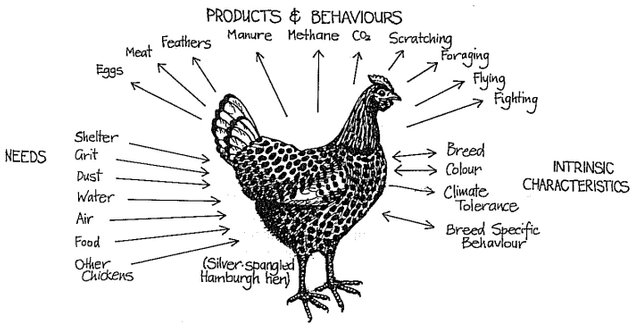
source
The classic example of the permaculture chicken.
Functional interconnectedness is a fancy way of saying that elements in the system feed in and out of each other. In the image above we see the needs and yields (products and behaviors) of a chicken. By using this information we can combine elements of the design to ensure that many yields are being achieved. The yield of manure and scratching can be easily achieved by containing chickens in an area. Their nature is to scratch and poo.
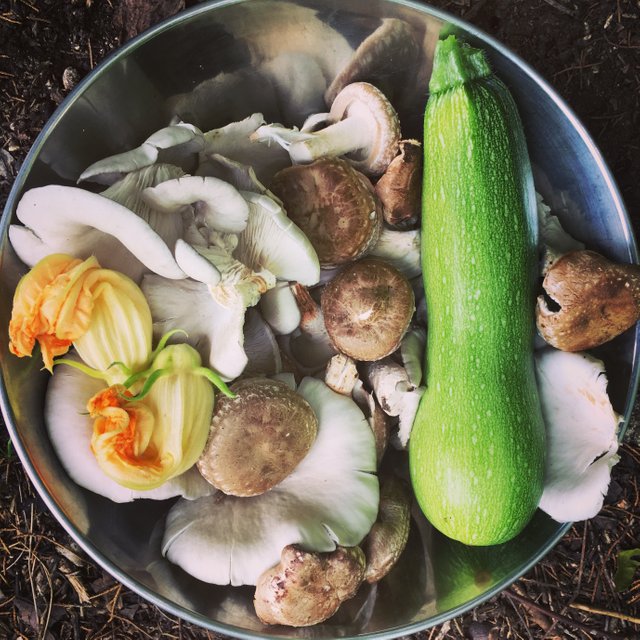
Today's harvest of shiitake mushrooms that we inoculated in oak logs 15 months ago (long term planning), annually grown zucchini and oyster mushrooms (a "waste stream resource" from a local organic mushroom business- short term yield). This demonstrates the principle because as we are waiting for our shiitakes, we have the ready yield of oyster mushrooms.
One way we obtain a yield is growing annuals
Much of our focus is placed on perennial crops that may take many years to reach fruiting capacity. In the meantime, we're hungry and need to grow annuals. We focus on easy, storable and hardy crops like sunchokes (aka Jerusalem artichokes), greens, and potatoes to meet our food needs while waiting for our trees to begin producing. We need to be feeding our bodies as we do the work of establishing a long term food system. No point on being too focused on meeting our long term needs if our short terms needs aren't met.
As Bill Mollison (co-founder of permaculture) says: "The yield of a system is theoretically unlimited, or, limited only by the information and imagination of the designer."
Getting creative with design and growing our idea of yields
The Mollison quote reminds us to be open to adaptation and to constantly be in a creative state. As designers, we are capable of forethought, reflection and observation. This means we can anticipate potential yields and build that into a system. We can always consider how to connect inputs and outputs for more holistic and resilient systems.
A common waste which is disposed of to "away" is our humanure. By safely and efficiently managing this output we can obtain a yield of fertility to feed trees and shrubs in the future. Fertility inputs are needed, and meeting this need from an output makes perfect sense. Not only are we not producing using and pollution prodigious amounts of water, but we are capturing a yield in the form of fertility that closes the loop of our systems
Observation and understanding elements of the system are crucial for harnessing yields.
One way we implement this on our homestead is by feeding the hens sunflower seeds in a moveable coop. As we move them every day, they don't manage to eat them all and the uneaten seeds soon sprout up after the chicken move on. These sunflowers provide nectar and pollen for our honeybees and other native pollinators while also creating habitat for parasitic wasps. These wasps can prey upon pests such as aphids. We also use them as bean trellises and enjoy seeing finches and other birds visit the mature heads while offering another yield int the form of their manure.
We are always learning more about how to maximize yields. A large part of this is simply getting to know the elements in our systems.
Yields come in many forms and it's up to us to understand and make use of them
In natural ecosystems, there is no such things as waste. All outputs from one things becomes an input for another. You ever see wild beings in the forest raking leave? Of course not! The leaves are a yield in organic matter. Trees drop leaves that become soil which in turn feeds the trees. We can take a lesson from this example.
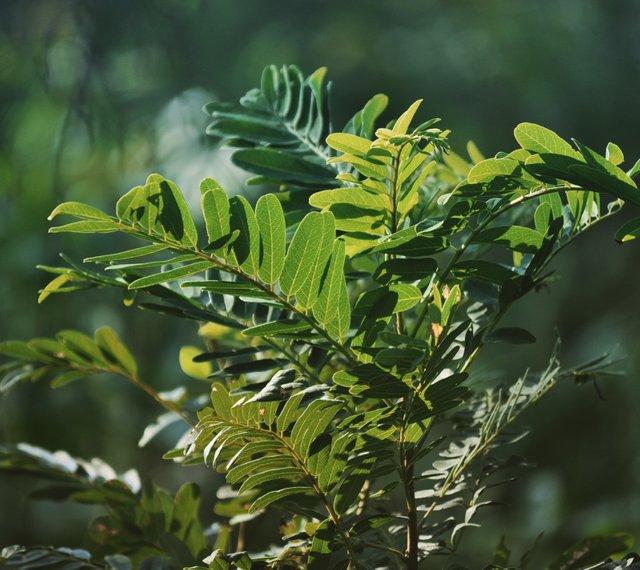
Amorpha fruticosa or Wild False Indigo, one of our favorite polyculture perennials that fixes nitrogen, acts as a "chop & drop" plant (creating biomass/mulch), and looks beautiful on the landscape while acting as a pollinator habitat.
By allying with the wisdom of systems FAR older and wiser than human developed ones, we are able to more effectively make use of the abundance that flows through the Earth.
It's up to us stay curious and creative as we endeavor to live in a sustainable manner. Obtaining a yield is about taking what you need and not more. If human culture acted in accordance with this attitude, there would be MORE than enough for everyone.
Get creative and think about untapped yields in your life!
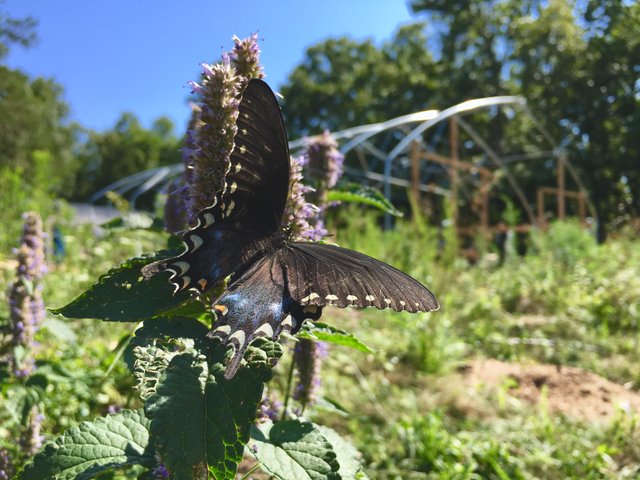
Beauty is a yield in and of itself. In the case of many flowers, they also have the benefit of adding pollinator habitats to the landscape, a worthy ecosystem addition in the face of declining pollinator habitats. Pictured here: Anise hyssop & butterfly.
Circle of Permaculture Principles
Join us next week for Self Regulate and Accept Feedback
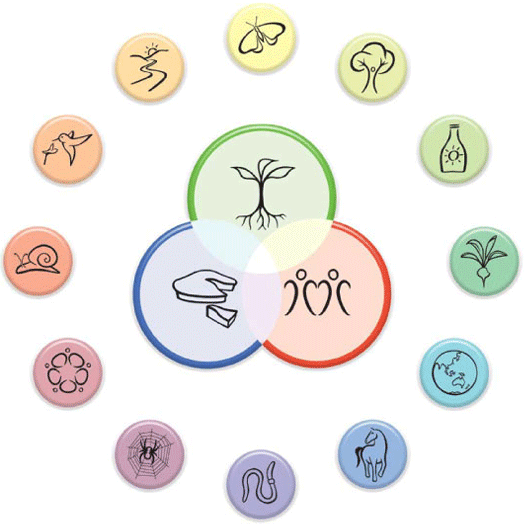.gif)
source
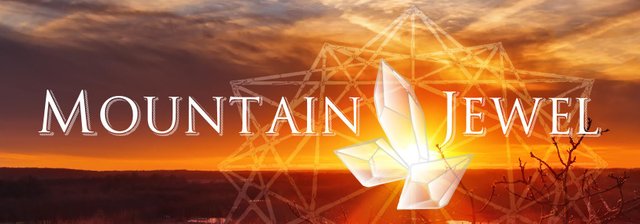

Like the audio link in the blog, maybe its just me but last week I went to soundcloud site to listen. Great photos to supplement show Golden Amaranth and mushroom, zucchini and blossoms especially pretty. I like the idea of yield being important to fuel the present and excess is used to contribute to growth for future. Like accounting, first pay expenses then re-invest profits into company for growth. Take only what you need from yield. Thanks @mountainjewel I'm really enjoying this radio show
yes! embedded it this week, good on ya for noticing! Glad you liked the shots and thanks for listening in. Your accountant example is spot on! Take what you need from the yield and invest in the future, but we gotta eat now for sure! thanks!!
I just drove to work which takes half an hour. It was lovely listening to you two rabbit on and I loved your show. I will listen to the other half on the way home. I loved what you said about beauty being a yield you are such a girl after my own heart. We can have all the practical survival yields in front of us we like but unless it's beautiful you can have it. And you know how I feel about those butterflies. Hey you should send me some of those purple pea pods purple pods purple pea pods in Australia wouldn't it be cool if I grew some Mountain Jewel goodness. Thanks for recording your show and sharing it as I'm always up too late.
Exactly, we can only survive so long without beauty. What a drab nasty world that would be! Beauty is 100% a necessary yield!! Feeds the soul! We'll have to get you some of those purple podded pole beans!! They're quite yummy and vigorous and yes seem to do well without too much water. Glad you could listen in and yesss I say urbalist!! XOXO i do love how you all pronounce the "H" but it would just seem preposterous around here if I was to do so ;)
The dreams of a city boy.. We should all know how to efficiently and ecologically grow our own foodstuff. thanks for sharing and good luck!